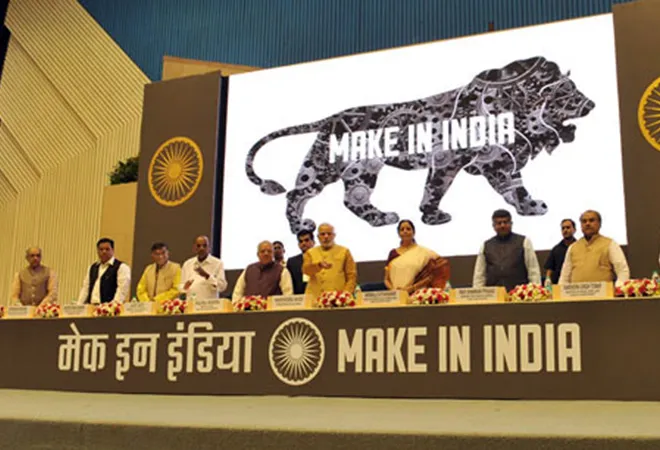
Despite some sporadic efforts by the central government, Make in India is yet to take off. Electricity supply has improved and so has internet and telephone connectivity. Roads are getting better and air and train travel easier. Consumer demand is growing despite the shrinking income expenditure gap. Still manufacturing in India is simply not picking up. While consumer demand grows, there are increasing imports happening despite the recent spate of duties that the government has put in place to prevent dumping. Whereas total imports are up by 20% to $ 444 billion in 2017, the imports excluding crude oil have jumped from $ 280 billion in 2015 to $ 370 billion in 2017. This shows that domestic production is unable to meet the consumer demand and our import dependence. More imports are taking place both in the food as well as the manufacturing sector. Domestic manufacturing still struggles like the farm sector and we cannot blame the WTO alone for our miseries.
Need for liquidity
There are many reasons and one of them is liquidity. Bank finance has dried up as the NPA saga continuous to roil the markets. It is not that the banks are in real danger of collapsing. They are flush with liquidity despite rising NPA write-offs. It is just that they are not lending to debt ridden big businesses. And the over-borrowed India Inc is stuck between a rock and the hard place. With refinance option from banks no longer available, they have to tidy their balance sheets before they expand with new projects. So large business houses are simply not investing in new projects. And even many old projects are being dropped.
The CMIE data for 2017-18 shows that like in 2011-12, the stalled projects in 2017-18
( Rs 7.67 Trillion) are catching up with new projects (Rs 7.91 Trillion). This, however, is not due to policy paralysis like before, but due to liquidity crisis. And this liquidity crisis is not due to demonetisation but due to insistence on compliance with laws by the RBI that is making banks cautious. As banks start adhering to guidelines that are increasingly becoming more and more stringent, the big borrowers are feeling the pinch. So many projects are being dropped and new projects have slowed down.
But bank finance to India Inc was just one of the factors and not everybody was over borrowed and stuck. The 50 million odd units of the MSME sector was showing signs of recovery despite the hiccups due to the bottlenecks during implementation of the GST. It was suffering due to restricted bank capital and got a boost when the RBI lifted the upper limits of borrowing for the MSME sector in March 2018. Under the old regulations, the small and micro sector could get Rs 5 crore and the medium sector enterprises could get Rs 10 crore under the priority sector lending schemes. However, most banks have not yet widely circulated the information to the customers as a result of which it is still largely unknown.
Besides interest rates in India have remained high to curb inflationary pressure and that remains a deterrent to borrowing.
Shrinking Govt spending
The liquidity crisis due to banks not lending and the high interest rates is just one set of deterrents. What is equally worrying is the tight-fisted attitude of the government in the absence of spending by large business houses. Public sector enterprises have also tightened their belts and despite a lot of talk, the Indian Railways has also slowed down work on important projects. While work in the two freight corridor projects are still behind schedule, four others are likely to be dropped. Oil and gas exploration is seeing no fresh investments and new refinery projects in the public sector have not taken off.
The Government’s expenditure has been shrinking since the last five years. In 2011, the expenditure was 14.9% of the GDP but by 2016-17 it dropped to 13.4% and this year to 12.7% . Part of the reason is its excessive obsession with fiscal deficit. Another reason is the inability to get better return on investment on the expenditure done. Since it’s expenditure is not well directed towards creating growth, the politicians and the bureaucrats do not have the conviction to step up public sector spending.
Manufacturing sector projects have been the hardest hit because many of them depended on public sector spending. With both large projects in the private sector not happening and public sector spending receding, the manufacturing sector is caught in a bind. Besides, certain industries like the pharma sector are facing pressure from their traditional export markets as the US FDA has tightened its norms under the Trump regime. Protectionism will hit the manufacturing sector the hardest because our policy planners do not act proactively. We will always be reacting to others instead of acting to enlarge our export markets with a well thought out road map. Domestic demand is, however, expected to remain strong. However, it is unlikely that the manufacturing sector will boom.
Need for tax regime stability
Apart from the lack of finance and new opportunities, there are several other uncertainties that dog the manufacturing sector. One of them is the way GST and the e-way bill that have been introduced in rapid succession. The e-way implementation should have happened only two years later after the GST issues had been totally resolved and the businesses stabilised. The GST cycle of payments and refunds should have been allowed to become current and run for a full cycle of two years to ensure a smooth and business friendly adoption. Now the government runs at least two years behind and the 2016 cases for refund to exporters have been just settled. So cash flow of businesses still remain stuck.
Besides, amendments are still being made in the GST law even after a year which shows that it needs further introspection. As a matter of fact the revenue secretary has admitted recently that they are working on a single page simplified form that would be introduced later this year. So GST is clearly a work in progress. There is nothing wrong in that provided the simplifications are actually simple. But introducing the e-way bill at this stage is increasing the complexity. Like in the launch of a space craft, the major problem starts when you launch the stage 2 missile of ‘formalisation of the economy ‘ (the e-way bill) before the stage 1 ( GST regime ) trajectory has stabilised.
Besides, there are serious doubts wether the e-way bill is making it easy for the transporters and goods movement across India. The e-way bill is clearly stage 2 of the GST in order to ensure compliance, not to ensure ease of business. It’s premature introduction is, however, not helping ensuring compliance. This is because the transporters are not equipped to check whether the printed GST number of clients are genuine or not. They are being flooded with consignments below Rs 50,000 and businesses indulging in false invoicing for inter-State shipping, especially in north and eastern India, is rampant. The States are also not yet on the same page, whether trucks should stop at borders or not. In several places where check posts have been removed, Gunda Tax has started, with the help of local politicians.
Manufacturing is a difficult business and needs stability to prosper. Unless we are able to provide a stable fiscal environment and nurture manufacturing, we cannot expect ‘Make in India’ to really take off.
The views expressed above belong to the author(s). ORF research and analyses now available on Telegram! Click here to access our curated content — blogs, longforms and interviews.




 PREV
PREV


